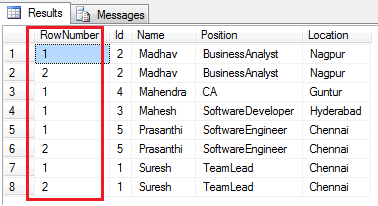DECLARE @name VARCHAR(50) -- database name DECLARE @path VARCHAR(256) -- path for backup files DECLARE @fileName VARCHAR(256) -- filename for backup DECLARE @fileDate VARCHAR(20) -- used for file name
DECLARE @path VARCHAR(50)= 'D:\op\Cooper\DB\OKTest\'
DECLARE @fileDate VARCHAR(50)= CONVERT(VARCHAR(20),GETDATE(),112)
DECLARE @filename VARCHAR(100)=null
DECLARE db_cursor CURSOR FOR SELECT name FROM master.dbo.sysdatabases WHERE name NOT IN ('master','model','msdb','tempdb') -- exclude these databases
OPEN db_cursor FETCH NEXT FROM db_cursor INTO @name
WHILE @@FETCH_STATUS = 0 BEGIN SET @fileName = @path + @name + '_' + @fileDate + '.BAK' BACKUP DATABASE @name TO DISK = @fileName
FETCH NEXT FROM db_cursor INTO @name END
CLOSE db_cursor DEALLOCATE db_cursor
DECLARE @path VARCHAR(50)= 'D:\op\Cooper\DB\OKTest\'
DECLARE @fileDate VARCHAR(50)= CONVERT(VARCHAR(20),GETDATE(),112)
DECLARE @filename VARCHAR(100)=null
DECLARE db_cursor CURSOR FOR SELECT name FROM master.dbo.sysdatabases WHERE name NOT IN ('master','model','msdb','tempdb') -- exclude these databases
OPEN db_cursor FETCH NEXT FROM db_cursor INTO @name
WHILE @@FETCH_STATUS = 0 BEGIN SET @fileName = @path + @name + '_' + @fileDate + '.BAK' BACKUP DATABASE @name TO DISK = @fileName
FETCH NEXT FROM db_cursor INTO @name END
CLOSE db_cursor DEALLOCATE db_cursor



